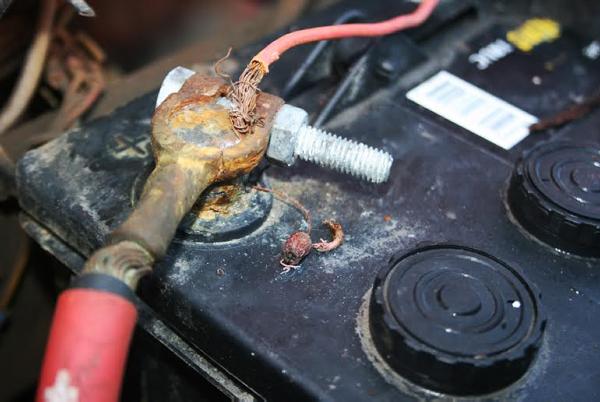We have had a fantastic summer this year – so you might expect to have a cold or wet winter, or even both. This places extra pressure on man and machine. In particular, batteries and electrical systems become less efficient at lower temperatures.
The colder an engine is, the harder it is to turn over, and ultimately to start. Rain means lots of moisture, which can cause havoc in fuel and electrical systems.
Regular maintenance and pre-winter checks should help ensure any issues do not develop into serious problems. There are plenty of jobs that can be done and checks that can be carried out.
Battery options
The first cold morning of the winter usually spells the end for a battery that has been limping through the summer and into the autumn.
If you suspect the battery has reached the end of its life, then it needs to be tested by a battery specialist or mechanic.
If you have a tractor that is hard to start, then it may be worth looking at more powerful options that will fit into the same space as the existing unit.
The three batteries pictured all share the same physical dimensions and are perhaps the most common sizes used in tractors. The battery on the left has a 120 amp/hour rating and the battery on the right has a 105 amp/hour rating, while the grey on in the middle is a deep-cycle battery. Without getting too bogged down in the different capacities, just remember that the higher the amp/hour rating, the stronger the battery is.
Deep-cycle batteries are useful for tractors that are hard to start and take a lot of winding to get going. Be warned, the prices do rise with capacity but could be worth it for the winter.
Stay safe with batteries
The vast majority of agricultural or auto batteries are what we describe as wet-cell or lead-acid batteries. Sulphuric acid within a lead-acid battery is very corrosive, and will burn on contact with skin.
A wet-cell battery produces hydrogen gas, which is extremely dangerous and can explode if exposed to a flame or spark.
If working on or near a battery, wear suitable eye and hand protection. Have access to clean water to immediately wash acid off if it comes in contact with skin. A good safety tip is to tell somebody what you are doing and where you are working if possible. No one ever plans an accident, but we can help ourselves by being organised.
When removing or working on a battery or its connections, always dis-connect the negative terminal marked by the “–” symbol on the battery first.
When connecting up a battery, always connect the negative terminal last. If in any doubt, ask an expert or get your mechanic do the work for you.






 This is a subscriber-only article
This is a subscriber-only article


















SHARING OPTIONS: